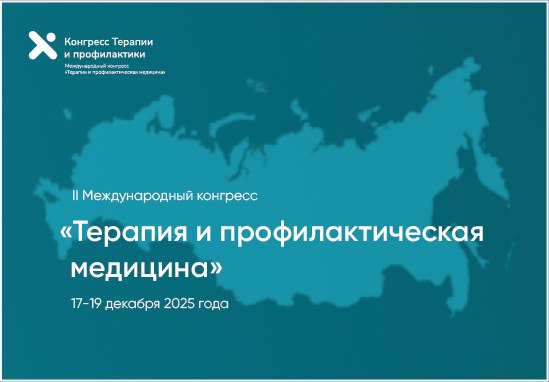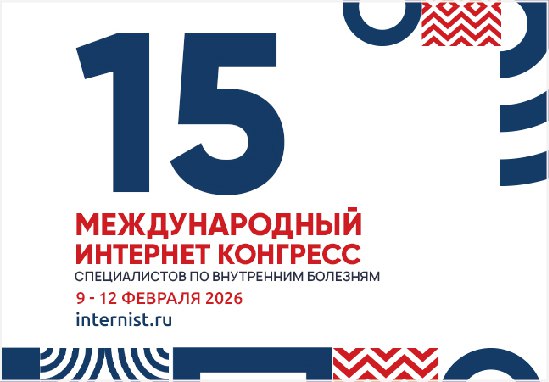Potential of cardiopulmonary exercise testing and diastolic stress test in diagnosis of heart failure with preserved ejection fraction in patients with hypertension and obesity
https://doi.org/10.15829/1728-8800-2025-4296
EDN: NPRPHJ
Abstract
Aim. To evaluate the potential of cardiopulmonary exercise testing in combination with exercise stress echocardiography in detection of heart failure (HF) with preserved ejection fraction (HFpEF) in patients with hypertension (HTN) and obesity.
Material and methods. The observational study included 150 patients with HTN, of which 35 were without obesity and had no signs of HF, 35 — with obesity and without signs of HF, while 80 had signs of HFpEF and obesity. Hypertension was considered detected with office blood pressure ≥140/90 mm Hg, while obesity — with a body mass index ≥30 kg/m2. Patients underwent resting and exercise echocardiography, and the parameters of systolic and diastolic left ventricular (LV) function were analyzed. During the diastolic stress test, LV diastolic function was assessed at 50 W, upon reaching the anaerobic threshold (AT), submaximal heart rate, and during the recovery period.
Results. The mean age of patients was 58,2±10,8 years. Changes of tissue Doppler parameters in patients with HFpEF showed significantly lower septal and lateral mitral annulus velocity (e’) at all exercise stages, compared with other groups. At the same time, septal and lateral e' increased as AT was reached, and a further exercise increase was not accompanied by an increase in these parameters at the level of submaximal heart rate.
Conclusion. The combination of diastolic stress test with cardiopulmonary testing made it possible to identify a decrease in LV systolic function with a load increase above AT in patients with HFpEF, while in other groups these parameters continued to grow. These parameters can be used in the diagnosis of HFpEF with an inconclusive increase in the ratio of the peak velocity of early diastolic transmitral flow to early diastolic rise of LV base (E/e’) at a low exercise level.
About the Authors
E. Yu. ShupeninaRussian Federation
Moscow
G. A. Safarova
Russian Federation
Moscow
Yu. A. Vasyuk
Russian Federation
Moscow
References
1. Galyavich AS, Tereshchenko SN, Uskach TM, et al. 2024 Clinical practice guidelines for Chronic heart failure. Russian Journal of Cardiology. 2024;29(11):6162. (In Russ.) doi:10.15829/1560-4071-2024-6162.
2. Gohar A, Kievit RF, Valstar GB, et al. Opportunistic screening models for high-risk men and women to detect diastolic dysfunction and heart failure with preserved ejection fraction in the community. Eur J Prev Cardiol. 2019;26(6):613-23. doi:10.1177/2047487318816774.
3. Borlaug BA. Evaluation and management of heart failure with preserved ejection fraction. Nat Rev Cardiol. 2020;17:559-73. doi:10.1038/s41569-020-0363-2.
4. Vasyuk YuA, Shupenina EYu, Namazova GA. Novel algorithms for diagnosing heart failure with preserved ejection fraction in patients with hypertension and obesity. Cardiovascular Therapy and Prevention. 2021;20(1):2569. (In Russ.) doi:10.15829/1728-8800-2021-2569.
5. Yang JH, Harada T, Choi KH, et al. Peripheral venous pressure-assisted exercise stress echocardiography in the evaluation of pulmonary hypertension during exercise in patients with suspected heart failure with preserved ejection fraction. Circ Heart Fail. 2022;15:e009028. doi:10.1161/CIRCHEARTFAILURE.121.009028.
6. Ponikowski P, Voors AA, Anker SD, et al. 2016 ESC guidelines for the diagnosis and treatment of acute and chronic heart failure: the Task Force for the diagnosis and treatment of acute and chronic heart failure of the European Society of Cardiology (ESC) developed with the special contribution of the Heart Failure Association (HFA) of the ESC. Eur Heart J. 2016;37:2129-200. doi:10.1093/eurheartj/ehw128.
7. Buckley LF, Canada JM, Del Buono, et al. Low NT-proBNP levels in overweight and obese patients do not rule out a diagnosis of heart failure with preserved ejection fraction. ESC Heart Fail. 2018;5:372-8. doi:10.1002/ehf2.12235.
8. Pavlyukova EN, Kuzhel DA. Heart failure with preserved ejection fraction: the role of diastolic stress test in diagnostic algorithms. Russian Journal of Cardiology. 2021;26(2):4147. (In Russ.) doi:10.15829/1560-4071-2021-4147.
9. Kapłon-Cieślicka A, Laroche C, Crespo-Leiro MG, et al. Is heart failure misdiagnosed in hospitalized patients with preserved ejection fraction? From the European Society of Cardiology — Heart Failure Association EURObservational Research Programme Heart Failure Long-Term Registry. ESC Heart Fail. 2020;7(5):2098-112. doi:10.1002/ehf2.12817.
10. Pop-Busui R, Januzzi JL, Bruemmer D, et al. Heart failure: an underappreciated complication of diabetes. A consensus report of the American diabetes association. Diabetes Care. 2022;45: 1670-90. doi:10.2337/dci22-0014.
11. Harada T, Kagami K, Obokata M. Exercise stress echocardiography in the diagnostic evaluation of heart failure with preserved ejection fraction. J Cardiovasc Dev Dis. 2022;9:87. doi:10.3390/jcdd9030087.
12. Sicari R, Nihoyannopoulos P, Evangelista A, et al.; European Association of Echocardiography. Stress echocardiography expert consensus statement: European Association of Echocardiography (EAE) (a registered branch of the ESC). Eur J Echocardiogr. 2008;9(4):415-37. doi:10.1093/ejechocard/jen175.
13. Sozzi FB, Maganti K, Malanchini G, et al. Diastolic stress test in heart failure with preserved ejection fraction. Eur J Prev Cardiol. 2020;27(19):2089-91. doi:10.1177/2047487319858796.
14. Ovchinnikov AG, Ageev FT, Alekhin MN, et al. The role of diastolic transthoracic stress echocardiography with incremental workload in the evaluation of heart failure with preserved ejection fraction: indications, methodology, interpretation. Expert consensus developed under the auspices of the National Medical Research Center of Cardiology, Society of Experts in Heart Failure (SEHF), and Russian Association of Experts in Ultrasound Diagnosis in Medicine (REUDM). Kardiologiia. 2020;60(12):48-63. (In Russ.) doi:10.18087/cardio.2020.12.n1219.
15. Takagi T, Yoshikawa J. Diastolic stress echocardiography in Japanese elderly patients: prevalence and features of patients with elevated left ventricular filling pressure after treadmill stress. J Echocardiogr. 2011;9:17-23. doi:10.1007/s12574-010-0062-9.
16. Shim CY. Stress Testing in Heart Failure with Preserved Ejection Fraction. Heart Fail Clin. 2021;17(3):435-45. doi:10.1016/j.hfc.2021.02.007.
17. Obokata M, Kane GC, Reddy YN, et al. Role of diastolic stress testing in the evaluation for heart failure with preserved ejection fraction: a simultaneous invasive‐echocardiographic study. Circulation 2017;135:825-38. doi:10.1161/CIRCULATIONAHA.116.024822.
18. Belyavskiy E, Morris DA, Url-Michitsch M, et al. Diastolic stress test echocardiography in patients with suspected heart failure with preserved ejection fraction: a pilot study. ESC Heart Fail. 2019;6(1):146-53. doi:10.1002/ehf2.12375.
Supplementary files
What is already known about the subject?
- Diastolic stress test in combination with cardiopulmonary exercise testing allows for a more accurate diagnosis of heart failure with preserved left ventricular (LV) ejection fraction (HFpEF).
- The main diagnostic criteria are an increase in ratio of the peak velocity of early diastolic transmitral flow to early diastolic rise of LV base ≥15, an increase in peak tricuspid regurgitation velocity >3,4 m/s.
What might this study add?
- In obese patients, initial diastolic dysfunction was observed under a load of 50 W, which also persisted during the recovery period.
- Evaluation of tissue Doppler velocity parameters (septal and lateral e’) made it possible to identify a decrease in LV systolic function with an increase in load above the anaerobic threshold in patients with HFpEF, whereas in groups of patients with normal or slightly reduced body weight and hypertension and patients with hypertension and obesity, these parameters continued to increase.
- The use of transthoracic 2-dimensional speckle-tracking echocardiography made it possible to identify early signs of impaired systolic and diastolic LV function during exercise and made it possible to suspect the subclinical course of HFpEF.
Review
For citations:
Shupenina E.Yu., Safarova G.A., Vasyuk Yu.A. Potential of cardiopulmonary exercise testing and diastolic stress test in diagnosis of heart failure with preserved ejection fraction in patients with hypertension and obesity. Cardiovascular Therapy and Prevention. 2025;24(8):4296. (In Russ.) https://doi.org/10.15829/1728-8800-2025-4296. EDN: NPRPHJ

























































